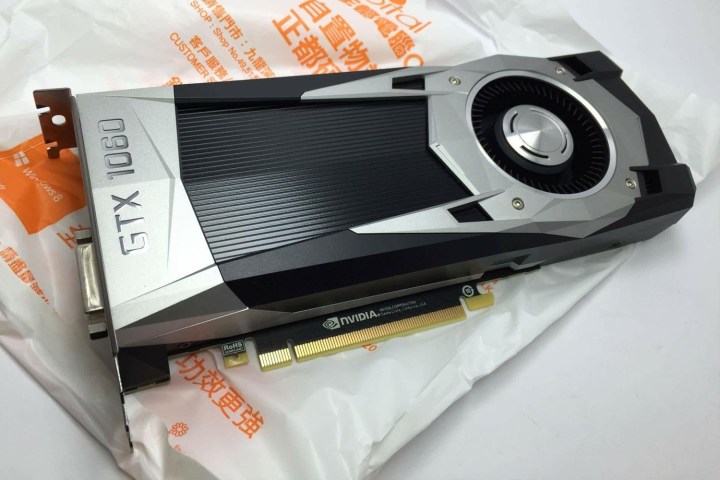
A recent test shows that Nvidia’s card comes out ahead. Testing included the use of the Oculus Rift, the HTC Vive, and four games: Chronos, Dirt Rally, Obduction, and Edge of Nowhere. The GTX 1060 outperformed the RX 480 in the first three games while both cards tied in performance in Edge of Nowhere. The cards’ performance was measured using FCAT VR, a frame capture analysis tool in the same vein as FRAPS, but for VR.
That, of course, raises a red flag. The tool is provided by Nvidia, so there is some skepticism given that the testing wasn’t performed with a non-Nvidia/AMD solution. However, the site testing the VR capabilities isn’t necessarily rooting for one specific team over the other, nor is there any indication that Nvidia fine-tuned the tool to provide better numbers for its GeForce cards.
That said, FCAT VR consists of two components. First, the Capture tool runs on the PC to evaluate its performance and uses data pulled from Oculus Event Tracing, the SteamVR performance API, and Nvidia driver stats. The second component is the Analyzer that grabs data generated by the Capture tool and shows the framerates, the dropped frames, warped frames, synthesized frames, and so on.
Finally, the testbed consisted of an Intel Core i7-5960X Haswell-E processor, an Asus Rampage V-Extreme X99 motherboard, 16GB of Ripjaws DDR4-3,200 from G.Skill, a Corsair AX1500i 1,500-watt power supply, and Windows 10 (64-bit). The operating system resided on a 256GB OCZ Agility 4 SSD and the tested games on a 500GB Adata SP610 SSD.
Using Nvidia driver version 378.78 and AMD driver version 17.2.1, the testing showed AMD’s card creating predicted frames in Chronos and Dirt Rally while Nvidia’s card generated all new frames. Both generated new frames in Edge of Nowhere whereas both cards were caught synthesizing predicted frames in Obduction.
Here are the numbers based on the high preset, which includes an additional test using the Oculus Rift-only Robo Recall game:
| GTX 1060 | Radeon RX 480 | |
| Chronos – Delivered FPS | 90.0 | 76.0 |
| Chronos – Unconstrained FPS | 112.5 | 93.8 |
| —– | ||
| Dirt Rally – Delivered FPS | 90.0 | 47.0 |
| Dirt Rally – Unconstrained FPS | 76.3 | 57.9 |
| —– | ||
| Edge of Nowhere – Delivered FPS | 90.0 | 90.0 |
| Edge of Nowhere – Unconstrained FPS | 150.3 | 143.9 |
| —– | ||
| Obduction – Delivered FPS | 63.9 | 55.3 |
| Obduction – Unconstrained FPS | 73.2 | 61.8 |
| —– | ||
| Robo Recall – Delivered FPS | 63.9 | 55.3 |
| Robo Recall – Unconstrained FPS | 73.2 | 61.8 |
As the numbers show, the GeForce card may be a better investment for $50 more. But at $250, customers looking to upgrade their desktop to support VR can’t go wrong with AMD’s Radeon RX 480 either. How Nvidia’s GeForce GTX 1060 card will measure up to AMD’s upcoming Radeon RX Vega card with the same price tag will be interesting to see.
Editors' Recommendations
- I tested AMD’s RX 7600 XT against the RTX 4060 — and I was shocked by the results
- Nvidia GeForce RTX 4070 vs. AMD Radeon RX 6950 XT: a close call
- This new leak spells bad news for AMD Radeon RX 7000
- AMD Radeon RX 6600 XT vs. Nvidia RTX 3060 Ti vs. RTX 3060
- AMD Radeon RX 5700 XT vs. Nvidia RTX 2070 Super



